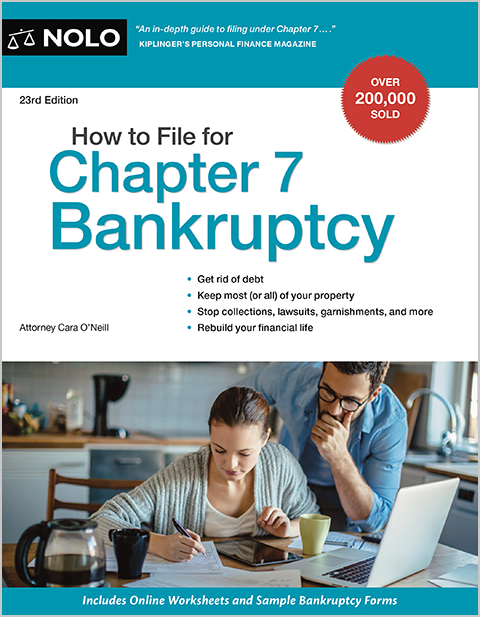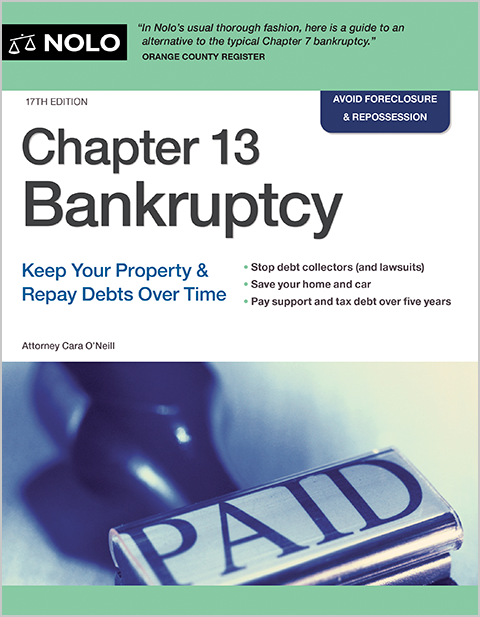If you sue a company in bankruptcy, you'll have to follow some special procedures.
Suing a company in bankruptcy isn't much different from any other suit, other than the bankruptcy adds a layer of court supervision at the beginning and the end of the case. However, you'll need to be aware of rules that will affect how you litigate the matter. If you don't follow the requirements, you could lose your right to prosecute the action, or worse yet, the court could hold you in contempt of court.
Pending Lawsuits and the Automatic Stay
If your civil lawsuit is in progress when the company you're suing (the defendant) files a bankruptcy case, the civil case will come to a stop. The automatic stay—a court order (injunction) that prohibits a creditor from collecting its debt while the company is in bankruptcy—is effective at the moment the company files for bankruptcy.
To continue the lawsuit, you'll have to file a motion asking the bankruptcy court to lift (remove) the automatic stay. But you'll need a good reason to get a judge to lift the stay. Continuing with the civil case without bankruptcy court permission could lead to:
- your civil case being dismissed
- being held in contempt of court
- being charged a hefty fine, and
- being ordered to pay damages (money) to the debtor (the company that filed bankruptcy).
Continuing the Case in Bankruptcy Court
Most civil lawsuits happen in state court, whereas bankruptcy cases are in federal court. That you initially filed a case against a company in state court doesn't mean that it will stay there. After the debtor (the person or entity that filed the bankruptcy case) files the bankruptcy case the bankruptcy court can order the state civil case moved to the federal bankruptcy court.
Whether the court orders the state case moved will depend on the type of case and how far the lawsuit has progressed. For instance, if the case involves money owed or property ownership—and the outcome will affect the amount of money that bankruptcy creditors will receive—then there's a good likelihood the court will order the lawsuit moved or refiled in bankruptcy court.
However, that isn't always the case. If the matter is close to trial, or actually in the process of being tried, the bankruptcy court will likely lift the automatic stay, allowing the litigation to continue in the state court. Courts tend to take that approach primarily because it would be too costly to require parties to start over.
Also, the court will probably let a state civil case continue if the outcome won't affect the bankruptcy case. For instance, suppose a plaintiff brings a lawsuit against the debtor's insurance in a personal injury case. If the injured person is suing for $25,000 and the driver's insurance covers claims of up to $50,000, then the bankruptcy estate won't stand to lose anything even if the injured person wins.
How to Sue a Company Already in Bankruptcy
Now, let's consider what happens if you're trying to sue a company that's already filed for bankruptcy. In this situation you usually have to file the lawsuit—called an "adversary proceeding"—in the bankruptcy court itself.
In most respects, these adversary proceedings work like cases filed elsewhere. But you should be aware that there are significant procedural differences—for instance, the way you'll file and serve the initial complaint. If the debtor is already in bankruptcy and you want to file a civil case outside the bankruptcy court, you'll need to get court permission.
You'll probably want to consult a lawyer if you're filing any kind of lawsuit, but doing so when the defendant company is already in the bankruptcy process can be especially important. To give you better context, here's an overview of issues involved in suing companies in Chapter 7 and Chapter 11 bankruptcy.
Suing a Company in Chapter 7 Bankruptcy
A company that files Chapter 7 bankruptcy is shutting down and using bankruptcy as an orderly way to dispose of assets and wrap up its affairs. As with any Chapter 7 case, a bankruptcy trustee will administer the case by gathering the assets, liquidating them, and using the proceeds to pay creditor claims.
The trustee will be a party to any lawsuit you file and will make all the decisions about the litigation on behalf of the bankruptcy estate. The debtor, its officers, and stockholders will no longer have any say in the affairs of the company, including the litigation (although the officers still have a duty to cooperate with the trustee).
Suing a Company in Chapter 11 Bankruptcy
A company that wants to remain open will file for Chapter 11 bankruptcy. In this chapter, the business will create a plan to reorganize its debt. However, if you file a lawsuit, the court will have to approve any settlement.
Again, because of the complicated nature of any adversary proceeding, you'd be well advised to discuss the specifics with a knowledgeable attorney.
Consult Bankruptcy Counsel for Your Lawsuit
Regardless of whether you plan to sue a company already in bankruptcy or you sued one that later filed for bankruptcy, it's vital that you have counsel who fully understands the bankruptcy process. For example, even if you already have a personal injury lawyer, you and your lawyer might need to bring in a bankruptcy attorney to ensure that the personal injury case complies with the special procedures necessary in the bankruptcy case.
You might have rights that you should be mindful of. Bankruptcy can be a minefield for those who are unfamiliar, so getting help from an experienced lawyer is usually essential.

